ULEZ expansion: How many Londoners are affected?
- Published
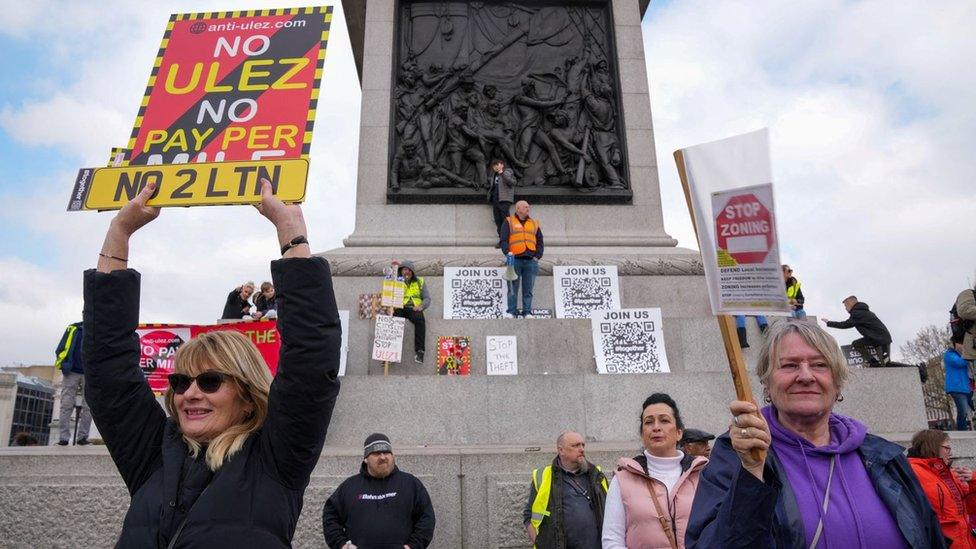
Sadiq Khan's policy of extending London's low-emission zone to cover the whole capital is perhaps the defining issue of his second term as mayor. He plans to introduce the ULEZ London-wide by the end of August, in the face of opposition from some of the councils that would be included in the zone. How ready are Londoners for the change?
When he answered questions over the impact of his flagship policy at the London Assembly last month, Mr Khan mis-spoke when he was asked about how many people ULEZ would affect.
"New data shows that nine out of 10 of households, external in outer London with a car are compliant, so very few have non-compliant cars in outer London," Mr Khan said.
Some boroughs say nearer a third of households with cars are affected.
Mr Khan's answer may have been an inadvertent error but it was wrong nonetheless, at least on the available evidence.
And with vastly contrasting claims coming just a day later from the motoring organisation RAC, it has highlighted an escalating information war and confusion over how many Londoners this policy does in fact touch.
What's compliant and what's not?
Under the proposed extension of London's ultra low-emission zone (ULEZ) from August, as with the current scheme, vehicles must meet Euro 4 standards for petrol cars (pre-2006) and Euro 6 standards for diesel cars (pre 2016).
What Transport for London (TfL) had briefed the mayor to say was that 90% of vehicles seen driving in outer London on an average day are currently compliant with ULEZ standards. A different claim, as we will see, from what Mr Khan said.
The RAC then released data from the Driver and Vehicle Licensing Agency (DVLA), obtained through a Freedom of Information request, showing that nearly 700,000 households in London have cars that don't comply with ULEZ standards - and so will be liable for a daily charge of £12.50 or a penalty of £180 for driving anywhere in London this autumn if they keep those vehicles.
This seemed potentially significant given there are about 1.9 million cars registered to households in outer London. Could non-compliance be nearer a third?
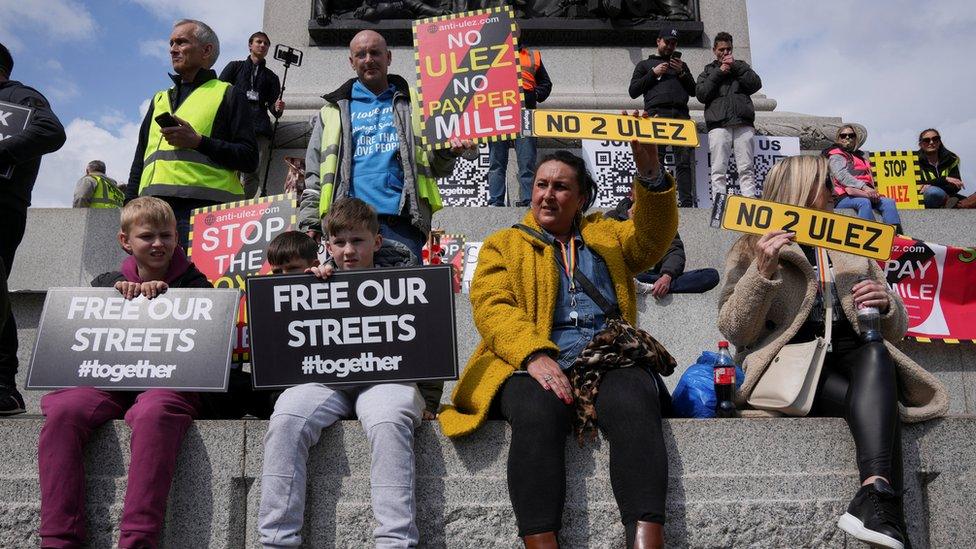
What is the true picture and what is a better gauge of the policy's impact? A snapshot of driving patterns and how much vehicles are used, or the number and nature of vehicles people actually own, however frequently they are driven?
Given Mr Khan is seeking a third term at City Hall, the political stakes are high and there could be a lot riding on whether his sums are seen to be correct.
What the mayor says
Consider first TfL's claims that 85%, upgraded to 90% last month, of cars in outer London are unaffected because they already meet emissions standards.
City Hall and TfL have not provided the actual numbers of cars seen driving in outer London.
But the claims are based primarily on data captured by automatic number recognition cameras set up for the original Low Emission Zone (LEZ), which targets HGVs. One limitation is the small number of cameras and that they are predominantly on main roads.
So it's possible this setup doesn't capture a large number of journeys, especially local ones. It does not filter out motorists coming into the zone from outside of London. TfL also uses a model based on "vehicle kilometres", which may underplay non-compliant cars because they are used less.
So how many trips to, for instance, a place of worship, once-a-week shops, visits to an elderly relative, and journeys to hospital appointments, could effectively be missed?
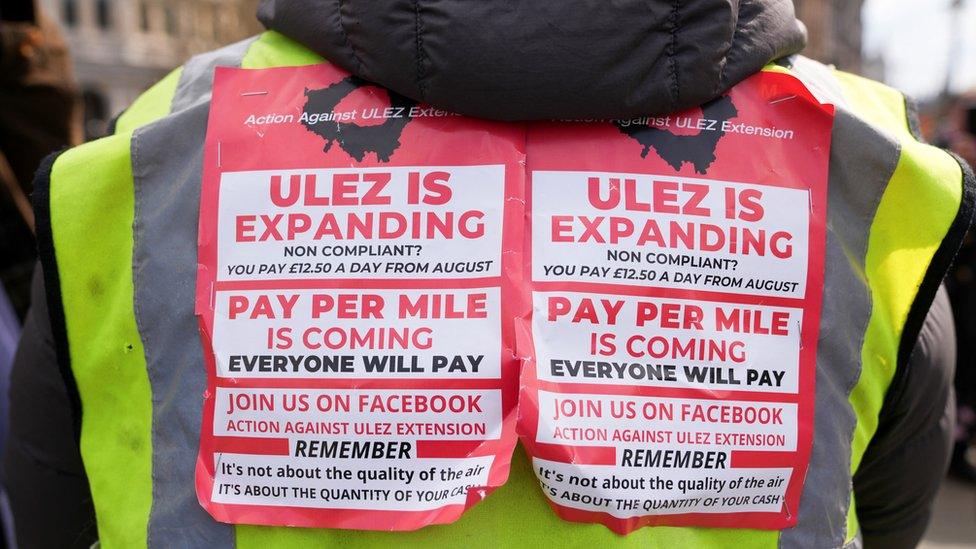
Caught on camera?
TfL has not told us how many cameras it uses now, but one indication of the current limitations is that 2,700 more cameras are deemed to be needed to enforce ULEZ when it hits outer London in August. TfL says only then will a truer picture of compliant car use be possible.
A second issue is the way the maths is done and what this means about a daily average. TfL says it looks at daily travel, cross-referencing data captured on cameras with DVLA records, each day coming up with a percentage figure of vehicles seen to be non-compliant in outer London, and then averaging that out over the period of a month.
What this looks like it could fail to convey is that different non-compliant vehicles are driven in outer London on different days. How significant might this be given post-Covid working patterns?
Those cars seen on weekdays will also diverge from those seen at weekends.
To clarify this, we have asked TfL and City Hall for the underlying figures, the total number of unique, different non-compliant vehicles captured on camera over a day and over a month.
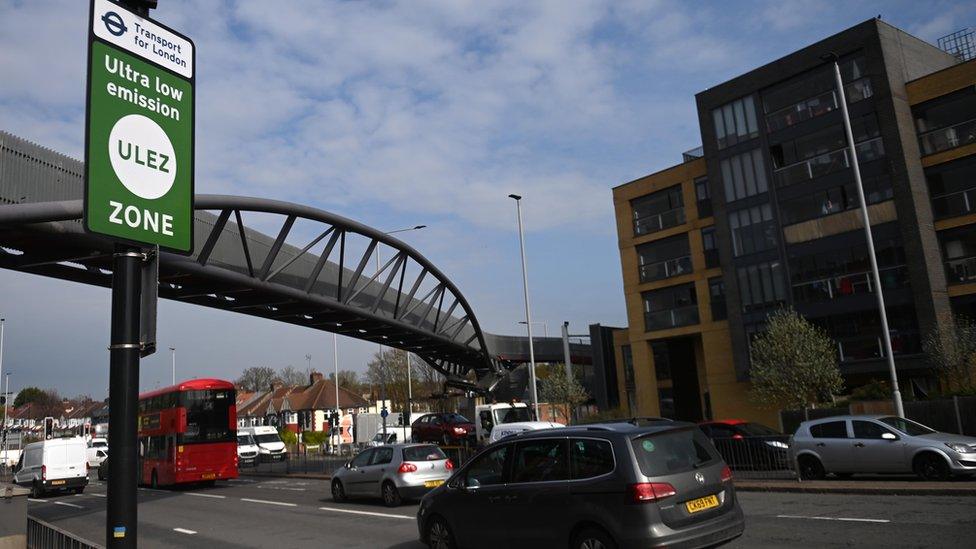
What the RAC says
The RAC data shows there are 700,000 cars registered to Greater London postcodes that are non-compliant.
The main problem with this data is that it covers an area wider than the proposed ULEZ zone, including postcodes going out to Dartford in the south east and Staines in the west. TfL says the data is also based on vehicle age rather than exact Euro emission standards, so will include vehicles that are actually compliant.
How much should this reduce the RAC's version of affected households? City Hall won't give an estimate but says registered vehicles do not provide the right data to understand the impact of the scheme.
TfL has access to all the DVLA data on compliance. It has not released it for 2021 but says it will provide it for 2022 in due course alongside data from the Society of Motor Manufacturers and Traders.
However, snippets in TfL's own reports - produced last year for the consultation into the expansion - suggest the picture of non-compliance is different from what it and the mayor have been saying.
In its impact assessment, external the independent consultancy firm Jacobs reported: "Outer London has large areas with lower levels of compliance (62-72%) which also correspond with areas of high deprivation in the north and east (including Hounslow, Ealing, Brent, Barking and Dagenham, north Croydon, southern Kingston upon Thames, south Havering and north Bexley). The lowest levels of compliance (58-67%) are shown in Hounslow."
We understand Jacobs has the data for all London boroughs and we contacted the firm for that to provide a complete picture for outer London. Jacobs said we needed to ask TfL. We have asked TfL.
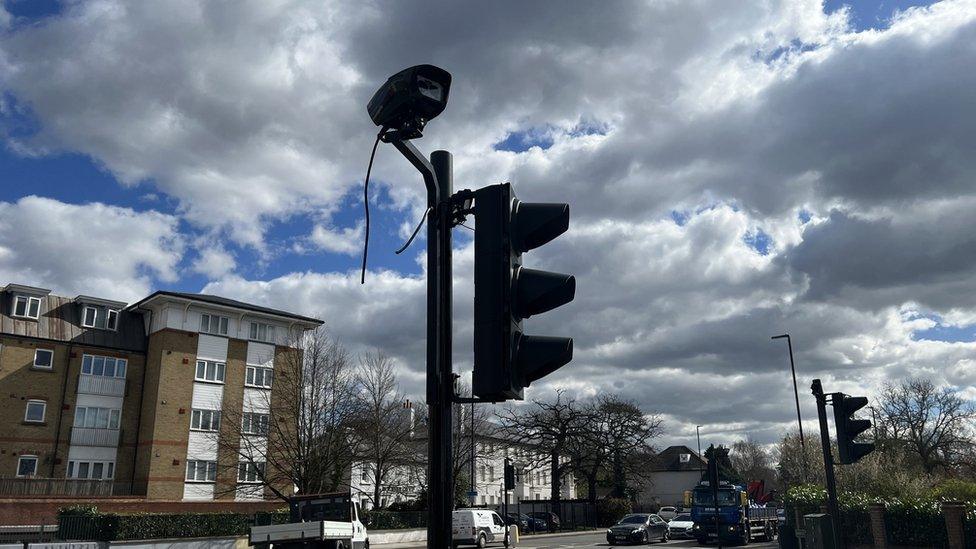
What London boroughs say
In the meantime, Hounslow and Sutton have told us that 30% of the cars registered in their boroughs are non-compliant. A small part of Redbridge is covered by the existing ULEZ and it has 22% of cars that are non-compliant.
We've asked other boroughs for the information, and there seems little reason to think there won't be a similar picture at least in some of them.
In addition, the Liberal Democrats have done their own analysis, based on DVLA data, suggesting a quarter of cars in outer London might not be compliant.
Mr Khan has put improving air quality at the heart of his mayoralty. He introduced the ULEZ in central London a year earlier than his predecessor Boris Johnson had planned. He says extending it to inner London reduced pollution by more than 20% in a year.
The mayor is the current chair of the C40 group of major international cities dedicated to tackling climate change. He's bringing out a book about his own experience of asthma. Broadly, he has environmentalists and scientists at his back. And most experts agree that London's air quality should be improved.
But many argue outer London has characteristics that make it very different from the area where the ULEZ has been introduced so far. People are more dependent on their cars. There are fewer public transport alternatives. Outer London has less exposure to concentrations of pollution. The reports informing the mayor's decision say that the beneficial effects are "moderate", "minor" or "negligible" depending on the pollutant.
There have been calls for Mr Khan to delay the latest planned expansion, with some pointing to the cost-of-living crisis and others to current availability and inflated prices in the second-hand car market. ULEZ expansion was not proposed in his 2019 manifesto.
But the mayor says it's not right to delay. That, he argues, would be "kicking the can down the road".

Follow BBC London on Facebook, external, Twitter , externaland Instagram, external. Send your story ideas to hellobbclondon@bbc.co.uk, external
Related topics
- Published16 February 2023
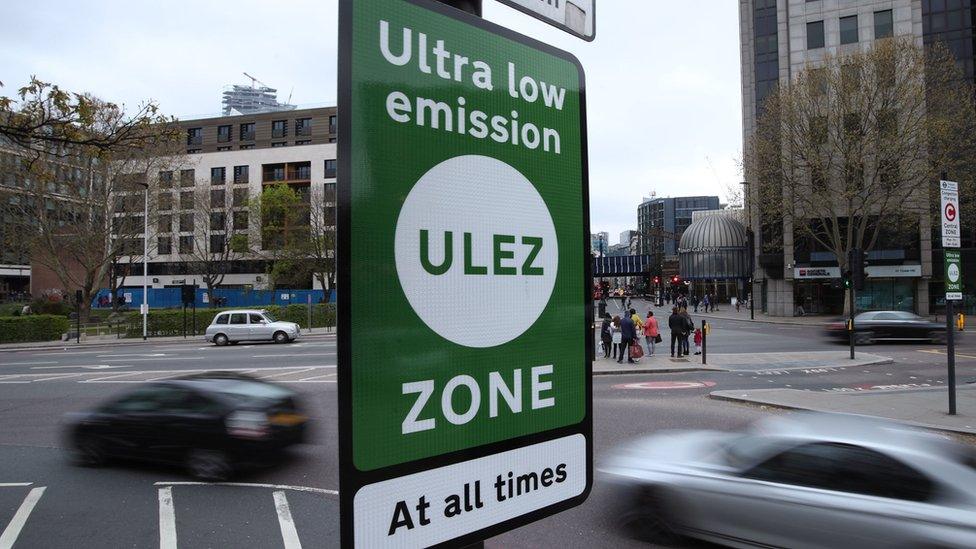
- Published10 February 2023
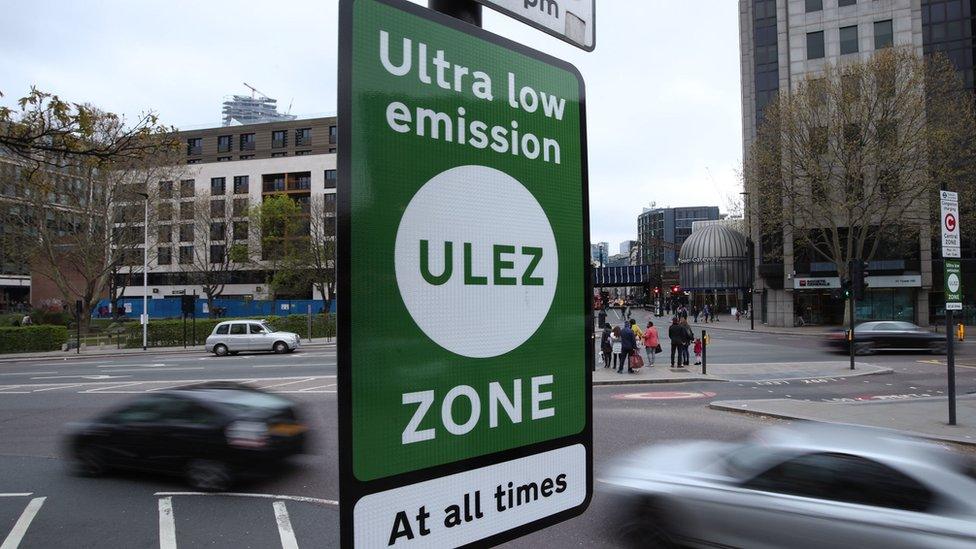
- Published15 February 2023
